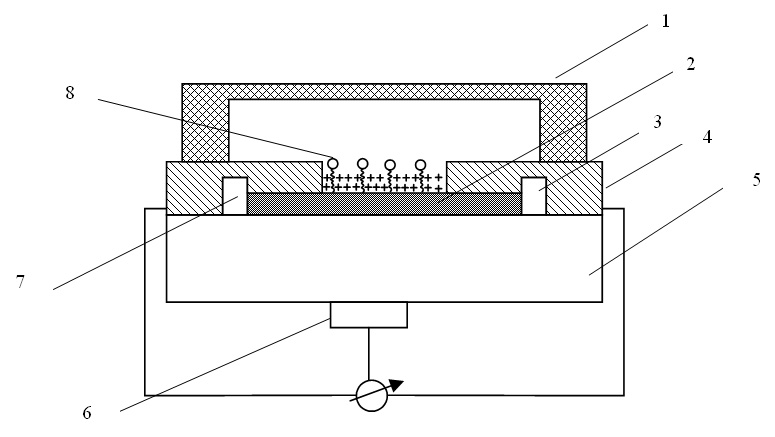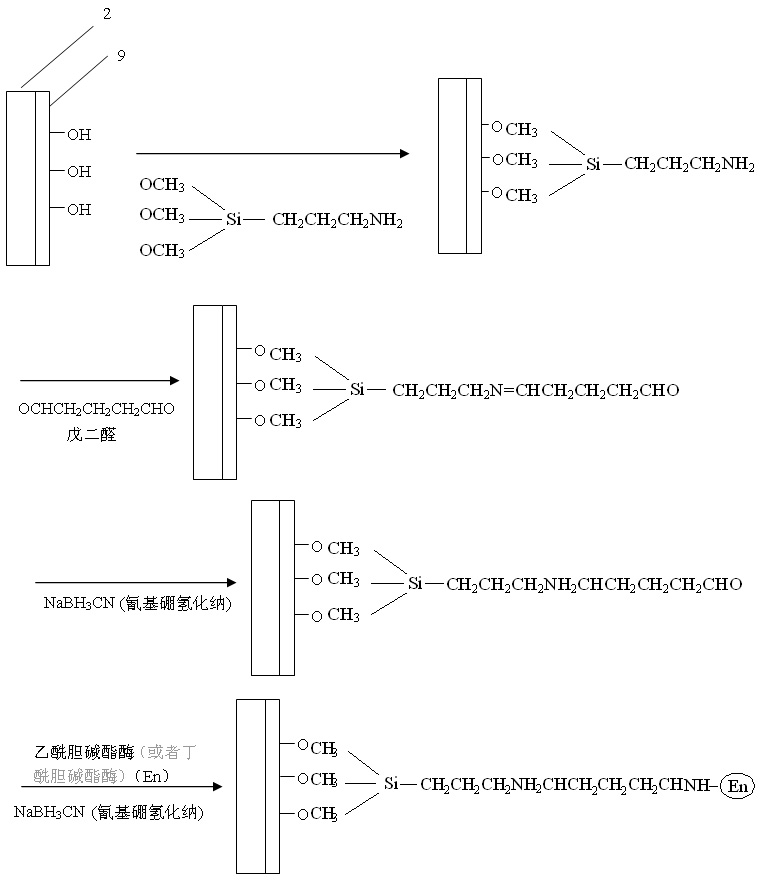Silicon nano-wire biological sensor for detecting pesticide residues
A technology for biosensors and pesticide residues, applied in the field of silicon nanowire biosensors, can solve the problems that the detection limit of biosensors cannot meet the requirements, and achieve the effects of compatible manufacturing processes, reduced manufacturing costs, and large specific surface area
- Summary
- Abstract
- Description
- Claims
- Application Information
AI Technical Summary
Problems solved by technology
Method used
Image
Examples
Embodiment Construction
[0033]The fabrication process of silicon nanowire-based nanobiosensors is described in detail below. Using the silicon oxide buried layer 5 on insulator as the substrate, use 40-keV electron beam etching method and dry etching method to etch silicon nanowires 2 of tens to hundreds of nanometers on the silicon substrate material, and then Deposit a thin layer of silicon oxide film on the surface of the silicon substrate, spin-coat the electron beam photoresist on the surface of this layer of silicon oxide, and then remove the photoresist at the reserved places of the source electrode 3 and the drain electrode 7, The ion beam implantation method is used to dope the As ions, and the carriers are activated by rapid thermal annealing under the nitrogen atmosphere, so as to complete the re-doping of the source 3 and the drain 7 . Boron is doped on the back of the silicon substrate to form the gate 6, and then an alloy is deposited on the source 3, drain 7 and gate 6 regions by ion s...
PUM
 Login to View More
Login to View More Abstract
Description
Claims
Application Information
 Login to View More
Login to View More - R&D
- Intellectual Property
- Life Sciences
- Materials
- Tech Scout
- Unparalleled Data Quality
- Higher Quality Content
- 60% Fewer Hallucinations
Browse by: Latest US Patents, China's latest patents, Technical Efficacy Thesaurus, Application Domain, Technology Topic, Popular Technical Reports.
© 2025 PatSnap. All rights reserved.Legal|Privacy policy|Modern Slavery Act Transparency Statement|Sitemap|About US| Contact US: help@patsnap.com



